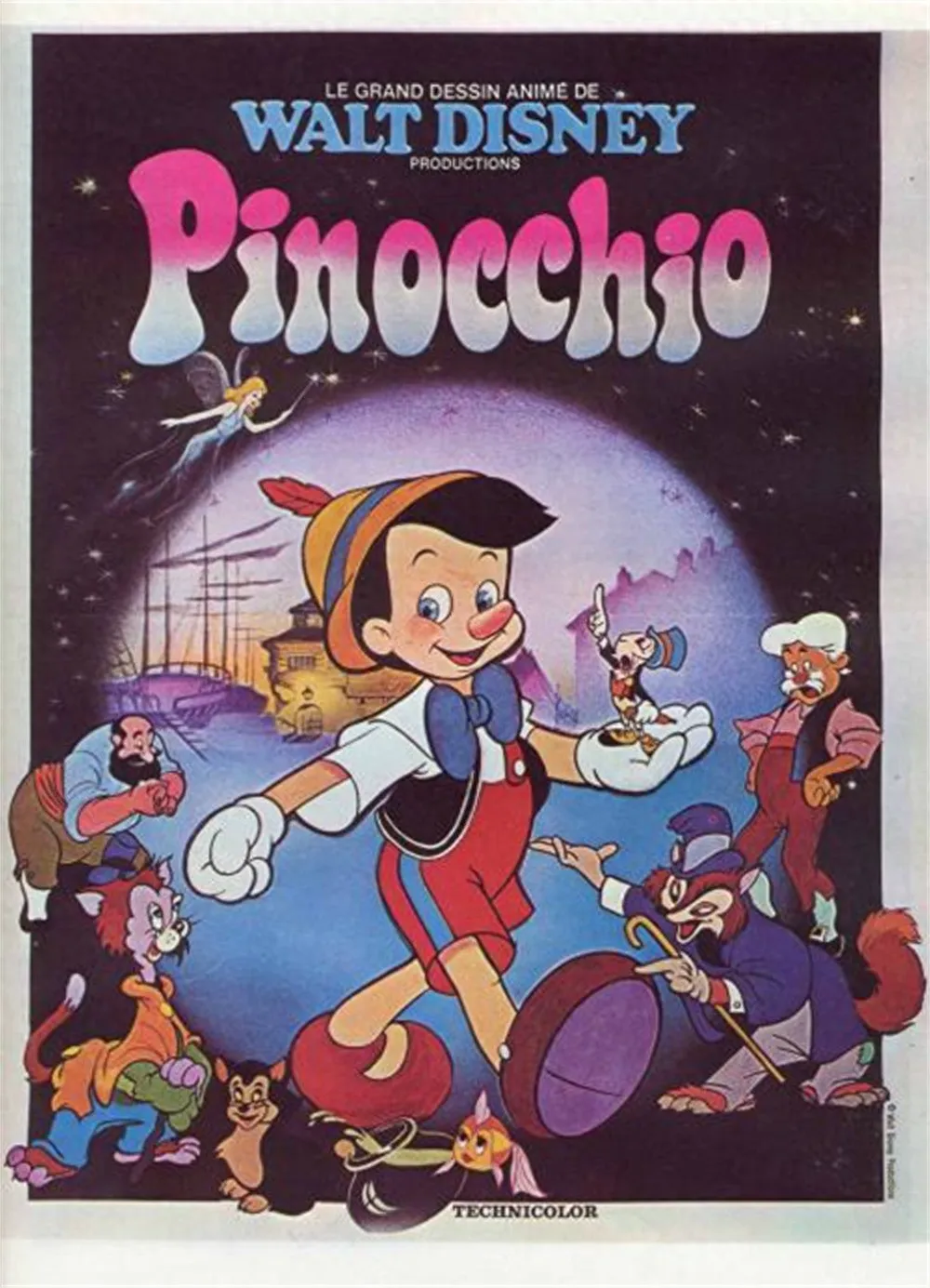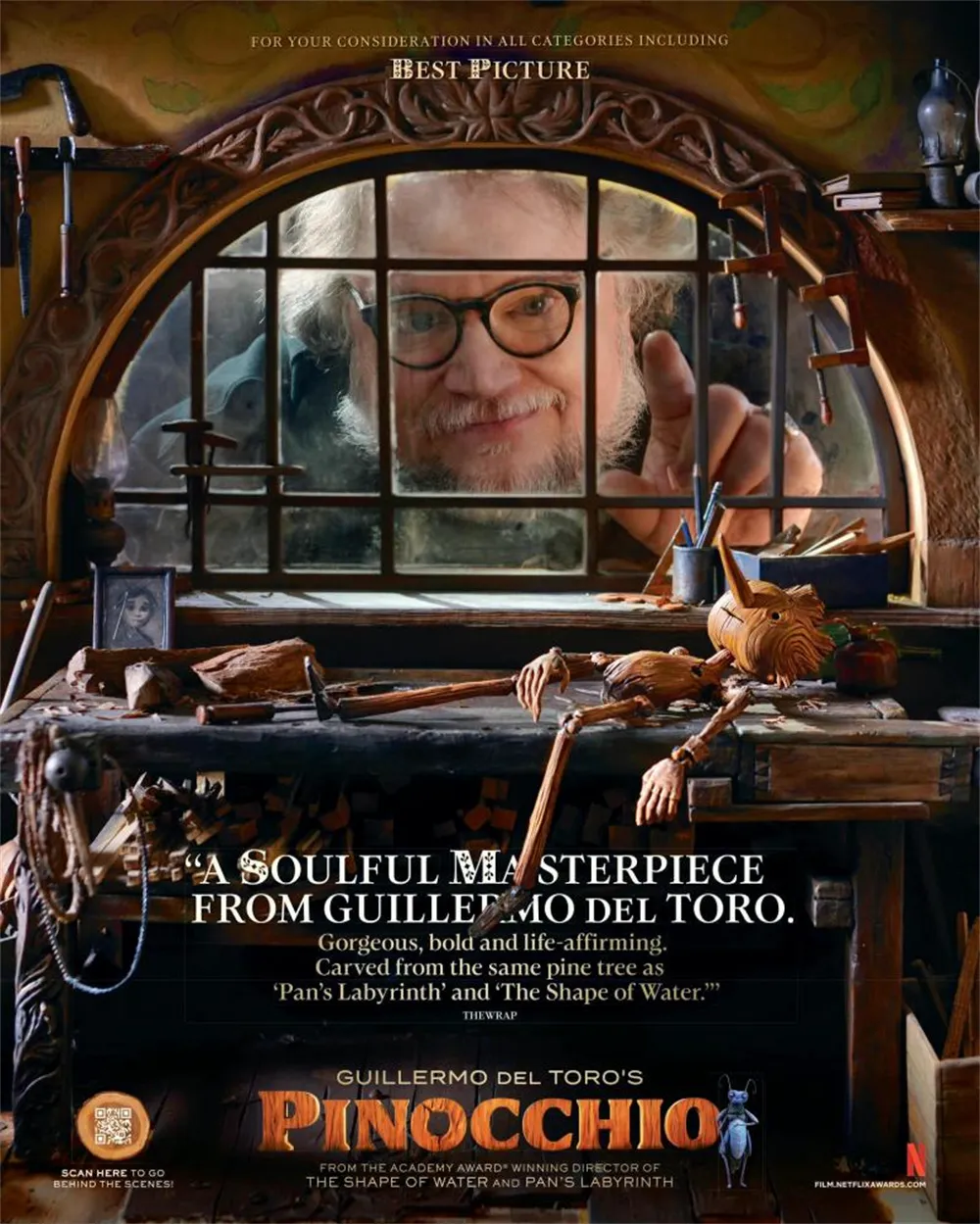The Enduring Magic of Pinocchio: From Classic Tale to Stop-Motion Spectacle
“Pinocchio,” the story of a wooden puppet who dreams of becoming a real boy, is a tale known and loved around the world. Created by Italian author Carlo Collodi, the story first appeared in serial form in “Il Giornale dei Bambini” (The Children’s Newspaper) in 1881, concluding in 1883. Initially described by its author as a “childish trifle,” it has since become one of the most widely circulated fairy tales in the world. The original work was introduced to China during the Republic of China era in the last century, most famously in a translation by Mr. Xu Diaofu, and was later translated as “The Adventures of Pinocchio.”
While many may not have read the complete 36-chapter fairy tale, most are familiar with iconic episodes like “the puppet boy turning into a donkey” or “the boy and his father unexpectedly reuniting inside a giant fish.” And, of course, everyone knows that “a child’s nose grows longer when they tell a lie.” These stories are treasures for both children and adults, teaching the importance of honesty and bravery. Through trials and adventures, a puppet ultimately transforms into a real boy.
Pinocchio on Screen: From Disney to Del Toro
This classic fairy tale has been adapted into animated and live-action films numerous times. The most famous is the 1940 Disney animated version. In 2022, another film, a combination of live-action and animation starring Tom Hanks as Geppetto, was released. To distinguish between versions, and in keeping with Western naming conventions, this version was titled “Guillermo del Toro’s Pinocchio,” highlighting the director’s vision.

The visual image of Pinocchio that circulates today is generally derived from the processed creation of the 1940 Disney film.

The biggest selling point of this version is probably the reputation of director Guillermo del Toro.
Guillermo del Toro’s Darker Vision
Guillermo del Toro, a Mexican filmmaker, gradually became a leading figure in the film industry since the 1980s through his work on special effects and makeup. As a director and screenwriter, films like “Pan’s Labyrinth” and “Pacific Rim” have brought him great artistic and commercial success in Hollywood. His film “The Shape of Water” (2017) won multiple awards at the Venice Film Festival and the Oscars, including Best Picture and Best Director, making him one of the few directors in the world who can be called a “film master” today.
While this master’s name may not be as widely known as some others, his artistic characteristics are very distinct: he excels at creating fantastical and realistic cinematic worlds from slightly bizarre fairy tale visuals. His personal interests often lead him to collaborate with other artists in various fields. For example, he appeared in Hideo Kojima’s video game “Death Stranding,” participating in the game’s production as a voice actor and motion capture performer. In later interviews, he mentioned that this experience was not only for fun but also a process of learning and expanding his artistic creation.
The new version of “Pinocchio” builds upon the original story by adding the historical backdrop of Italy during World War II, similar to “Pan’s Labyrinth.” The tragedy of Geppetto losing his son early in life, and Pinocchio’s later adventures in the circus and the military camp, are all related to the wartime environment. This is likely an element that del Toro himself particularly enjoys: adding a magical historical context to a magical story, creating a special literary theme through their interplay. Like the Cold War in “The Shape of Water,” humans in every era have the right to dream, and the value of dreams becomes even more precious under extreme pressure and cruelty than in times of peace. This is arguably the most significant artistic adaptation in this version of “Pinocchio.”
Furthermore, the film’s production by Netflix and the stagnation of major film production companies worldwide due to the pandemic made it one of the few noteworthy works in animation in 2022, earning it the Golden Globe Award for Best Animated Feature Film at the 80th Golden Globe Awards.
Of course, these recent excellent works seem somewhat lighter in weight compared to those of previous years. There’s no need to expect too much from the film; as a family-friendly work, the touching father-son relationship flows with the music, it’s educational for children to understand the world, and the unique animation style leaves a lasting impression. For a work that doesn’t inject too much novelty, it can be considered a success.
It’s not particularly exciting, nor does it fully utilize the special imagination of animated films, but all aspects are executed smoothly.
The Magic Behind the Scenes: Stop-Motion Animation
Beyond the film itself, the “Making Of” featurette produced by Netflix before the film’s release is worth exploring. While such promotional materials are generally only of interest to dedicated fans, this 40-minute featurette provides insight into the complex process behind stop-motion animation, fostering respect for the artists in the film industry. This special can be found on platforms like Bilibili.
Stop-motion animation uses a camera to capture still images, gradually changing the subject’s movements to create the illusion of continuous motion. The subjects are usually clay figures, puppets, paper cutouts, or cloth dolls, which are easy to create into specific shapes and modify. In addition to hand-drawn animation and 3D animation, stop-motion shooting is still an introductory technique for animation students.
In the documentary about “Pinocchio,” we can see how modern stop-motion animation uses mechanical skeletons to create the doll’s frame, along with 3D-printed silicone, wood carvings, and other materials to create more detailed doll features. These dolls are then constantly adjusted to create continuous animation effects.
The animators responsible for different sections are both the co-designers and makers of the dolls, as well as the operators of all the doll’s poses. Through a process similar to “playing with toys,” they transform the abstract written script into tangible screen visuals. They also continuously refine the dolls’ movements and expressions, giving these models a sense of human authenticity.
Achieving the final effect undoubtedly requires years of animation and model-making experience, as well as an extremely complex pre-production process. Before seeing the actual animation, the final screen effect is visualized step by step through storyboards and short live-action videos. This process ultimately facilitates collaboration between artists from different fields, resulting in a short animated scene. Years of such work, and the collaborative efforts of multiple groups of artists, are required to produce a 120-minute film.
While the production process of live-action films is also complex, the creation of stop-motion animation, which requires building all scenes and animated characters from scratch, has a dreamlike quality reminiscent of a creator.
In such behind-the-scenes features, watching the artists’ passion and dedication to their craft allows us to appreciate their love for “film art” in their daily, meticulous work.
Surprisingly, even in the regular introduction of voice actors, we can see the figure of Cate Blanchett. This powerful actress, one of the leading stars in the global film industry, insisted on doing voice work in the film out of admiration for director Guillermo del Toro. Unfortunately, she was ultimately left with only the role of the monkey, but she seemed to enjoy herself, creating different screams for the monkey and giving this animated character a unique and vibrant life.
Sometimes the fame, fortune, and glamour that movies bring can make people forget that the most original ideal of film is simply an artistic creation, conjuring up a world of imagination from nothing. In the field of animation, stop-motion production is an older craft than 3D animation, but it still has value in its heritage. “Pinocchio” showcases many details of this craft, which is not only grand but also exquisitely detailed, a spectacle that inspires awe. This reflects Guillermo del Toro’s unique artistic characteristic: the ultimate pursuit of the beauty of visual images.